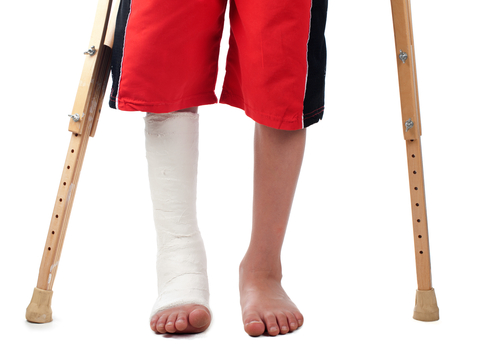By Leigh Schanfein of Dance Informa.
History and science museums are full of them. Graveyards and memorial grounds are packed with them. Archaeologists study those that have lasted millennia. Bones seem as tough and indelible as stone! And, while our bones are really hard and give our bodies support and protection, they are made up of living cells that continually build up and break down. Our bones even have blood vessels running through them, carrying oxygen and nutrients to those living cells. Because our bones are in constant flux, they are affected by how we treat our bodies, largely by what we do or do not eat, and by our physical activities.
Because our bones are in a constant state of regeneration, if we do not take care of our bodies in healthy ways, we could inadvertently damage our bones. Whenever we do exercise and the muscles pull on our bones, or we do “weight-bearing” activities and our skeleton has to bear the forces of our weight, the bone gets a signal that it needs to be strong to support these activities. This triggers an increase in building up bone and increasing bone density. This is good – dense bone is strong bone! Physical activity, especially weight-bearing activity, promotes bone turnover: first there is break down and then there is even more growth. But bone cannot be made out of thin air. We have to get the components for making bones in our diet. Without them, not only will our bodies not be able to lay adequate amounts of new bone on the old, it also will cause the body to strip bone of these resources so they are available for other important functions elsewhere in the body.
One thing that can happen to bones when there is too much demand that cannot be met, either because of too much physical stress or inadequate nutrition, or a combination thereof, is a stress fracture.
What is a stress fracture?
A stress fracture is a type of fracture, or break, that occurs because we are putting demands on the bone that cannot be met. In other words, the bone is being broken down more quickly than it is being regenerated. Unlike a traumatic fracture, a stress fracture occurs over time with repeated strain and usually doesn’t result in a complete break or displacement of the bone. It can occur in dancers because we are putting great physical demands on our bones both in amount of force and angle of force. It is especially problematic if a dancer is incurring great physical demands in conjunction with inadequate nutrition.

Lateral view of lumbar spine with stress fracture on pars interarticularis of the L5 vertebra. Diagram by Leigh Schanfein.
How do I know if I have a stress fracture?
Stress fractures generally occur slowly over time, so often a dancer might not even know he or she has one until it has progressed to a more serious stage. How much pain someone will experience also depends on the stress fracture location. For example, if the stress fracture is in the tibia, the bone you feel on the front of your shin, it might be very painful with jumping. But, if the stress fracture is in the spine then the dancer might not feel it unless he goes into a huge back extension (backbend) or adds a twist with that bend.
Usually the pain will be localized so you can point to exactly where it hurts, it will be over a bone, and there might be swelling and tenderness. A doctor will want to perform some diagnostic tests. Dr. Mamie Air is a physiatry fellow in interventional sports and spine who now treats dancers with more care than she received when she was a dancer! “I may not use an X-ray at all since many dancer patients are young and of reproductive age,” explains Dr. Air. Additionally, “often the X-rays will be normal, particularly if there is only a stress fracture… typically more imaging is needed.” Doctors used to turn to bone scans but now they more often use an MRI (magnetic resonance imaging) to diagnose because it doesn’t use radiation and can provide far more detail.
How is a stress fracture treated?
A stress fracture is one of those injuries that mostly just requires time to heal because the bone will need a while to heal. Dr. Air points out that it’s still a fracture. “Even if the bone has not completely fractured through, and is in the category of a stress reaction or a stress fracture, it is important to prevent it from progressing.” Treatment time depends on how early the stress fracture was detected and how far it has progressed as well as location in the body and what kinds of stresses are put on that bone. Healing can be as long as two to three months with partial or complete rest.
Prevention is best – how can I prevent a stress fracture?
Something really important in both injury prevention and general health is making sure you get adequate nutrition. This means obtaining all nutrient groups from your diet. Of particular importance for bone health are the minerals that make up bone, including Calcium and Phosphorus, and the vitamins and minerals that assist your body in using them, including Vitamin D, Magnesium and Manganese. Calcium is of the utmost importance and can be found in dairy products, leafy greens and nuts among other sources. Vitamin D is essential for absorption of Calcium in the body and, while it can be found in foods, our best source is the sun. We use energy from the sun to convert molecules already in our bodies into Vitamin D. You dancers who spend hours in the studio should try to get about 15 minutes of sunshine too!
Age is a factor in bone health. We can only increase our bone density until about age 30, so you need to be diligent about getting adequate nutrition, especially as a teenager.
Even someone with good bone health can get a stress fracture if they put enough repetitive stress on the bone. So, it’s important to pay attention to your body. Give yourself adequate rest. If you begin to experience the pointed pain associated with a stress fracture, see a trusted doctor as soon as possible.
What is Spondylolysis?
Spondylolysis is a stress fracture in one or more of the vertebrae in the lumbar spine, the bones in your lower back. It is a common stress fracture among young dancers who go into extreme back bends or “whack” their arabesque without using their muscles to properly support and protect the spine. The stress fracture develops on a slender part of the bone that connects the spiney parts that stick out from the round body of the bone. It also happens to be in between where the vertebra articulates or moves in contact with the bone above and below it in the spine, so it is a site of rotational forces.
As with any other fracture, “it is important to give your bones the optimum chance at healing. This unfortunately means being ‘shut down’ from all physical activities that could potentially harm this part of the spine.” Dr. Air says it is extremely important not to push through the pain. Surgery is rarely indicated but patients with spondylolysis are typically treated with two to three months rest from physical activity, which could include wearing a back brace to prevent back extension. Fortunately though, “rehabilitation typically occurs when the pain has stopped, and a dancer is recommended to begin a gradual physical therapy plan, particularly focused on core strength,” graduating to dance-like movements once he/she is strong enough to do so.
Keep Dr. Air’s advice in mind: “[Do] not push through the pain, seek consultation early if it is not getting better, discuss with your doctor the appropriate imaging test, take the advice to ‘rest’ very seriously (anticipate 2-3 months off dancing and performing), and then gradually get back into a graded rehabilitation plan.” It is also extremely important to figure out why the stress fracture occurred in the first place. Are you getting adequate nutrition? Is your caloric intake in line with your expenditure? Is your technique or choreography causing you to repetitively stress one part of the spine? Is the musculature supporting your torso weak? Speak with a trusted physician about your concerns to help you stay healthy so you can dance at your best!
For more information, read this great article about Bone Health for Dancers: www.danceinforma.com/USA_magazine/2011/12/03/bone-health-for-dancers
Dr. Mamie Air is a physiatry fellow in interventional sports and spine at New York City’s Hospital for Special Surgery.
Photo (top): © Zafi123 | Dreamstime.com
All material included in Dance Informa is provided in good faith. It is derived from sources believed to be accurate and current as at the date of publishing. Dance Informa does not take responsibility for any information deemed to be incorrect. Always check with your doctor if you think you may have a health issue.















